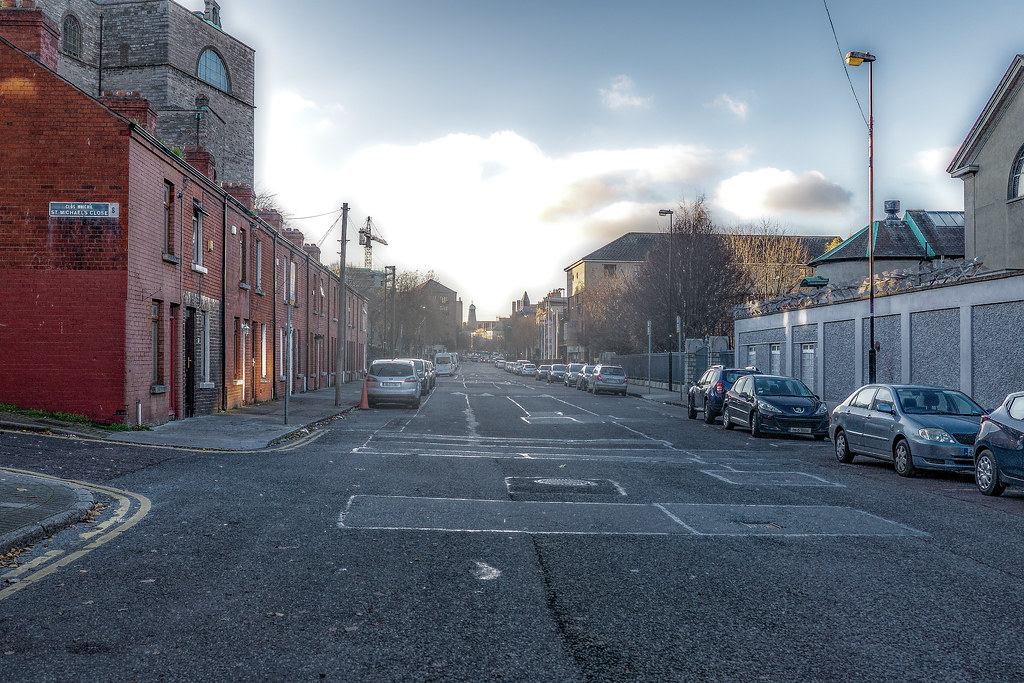COOK STREET OFF WINETAVERN STREET
In the the early 1800s there were sixteen coffin makers in Cook Street.
A few years I took a guided tour of the area near Christ Church and the guide explained that because of the dangers of having fires within the city walls certain actives such as baking were undertaken in streets such as Cook Street which was outside the city walls.
Cook street [off Winetavern Street] is one of the older streets in Dublin and has been in existence since the 14th Century. According to many historians it was originally known as ‘Vicus Cocorum’ meaning ‘the street of the cooks’ and it was also described in early records and maps as ‘Le Coke Street’. It should be noted that a few sections of the Hiberno-Norse wall was discovered along Essex Street West and this street marks the line of the northern wall, which ran parallel to the Liffey, through the Civic Offices and along Cook Street where it still survives today. This limestone wall was substantial in size originally measuring c.7m in height by 2m wide, from stone quarried locally.
The present day Adam and Eve church takes its name from the Adam and Eve tavern on Cook Street where the Franciscans once held secret masses. Catholics posing as drinkers would be admitted by a guard on giving the password "I am going to the Adam and Eve".
During the mid-19th Century, a Dublin publisher named John Nugent printed Old Moore's Almanac in Cook Street. One of Nugent's rivals referred to the almanac as 'the Rushlight of Coffin Colony'. This was a reference to the fact that Cook Street was then the home of Dublin's coffin makers.
A few years I took a guided tour of the area near Christ Church and the guide explained that because of the dangers of having fires within the city walls certain actives such as baking were undertaken in streets such as Cook Street which was outside the city walls.
Cook street [off Winetavern Street] is one of the older streets in Dublin and has been in existence since the 14th Century. According to many historians it was originally known as ‘Vicus Cocorum’ meaning ‘the street of the cooks’ and it was also described in early records and maps as ‘Le Coke Street’. It should be noted that a few sections of the Hiberno-Norse wall was discovered along Essex Street West and this street marks the line of the northern wall, which ran parallel to the Liffey, through the Civic Offices and along Cook Street where it still survives today. This limestone wall was substantial in size originally measuring c.7m in height by 2m wide, from stone quarried locally.
The present day Adam and Eve church takes its name from the Adam and Eve tavern on Cook Street where the Franciscans once held secret masses. Catholics posing as drinkers would be admitted by a guard on giving the password "I am going to the Adam and Eve".
During the mid-19th Century, a Dublin publisher named John Nugent printed Old Moore's Almanac in Cook Street. One of Nugent's rivals referred to the almanac as 'the Rushlight of Coffin Colony'. This was a reference to the fact that Cook Street was then the home of Dublin's coffin makers.

COOK STREET - A VERY OLD STREET
2018 PHOTO DIARY MAINTAINED BY WILLIAM MURPHY